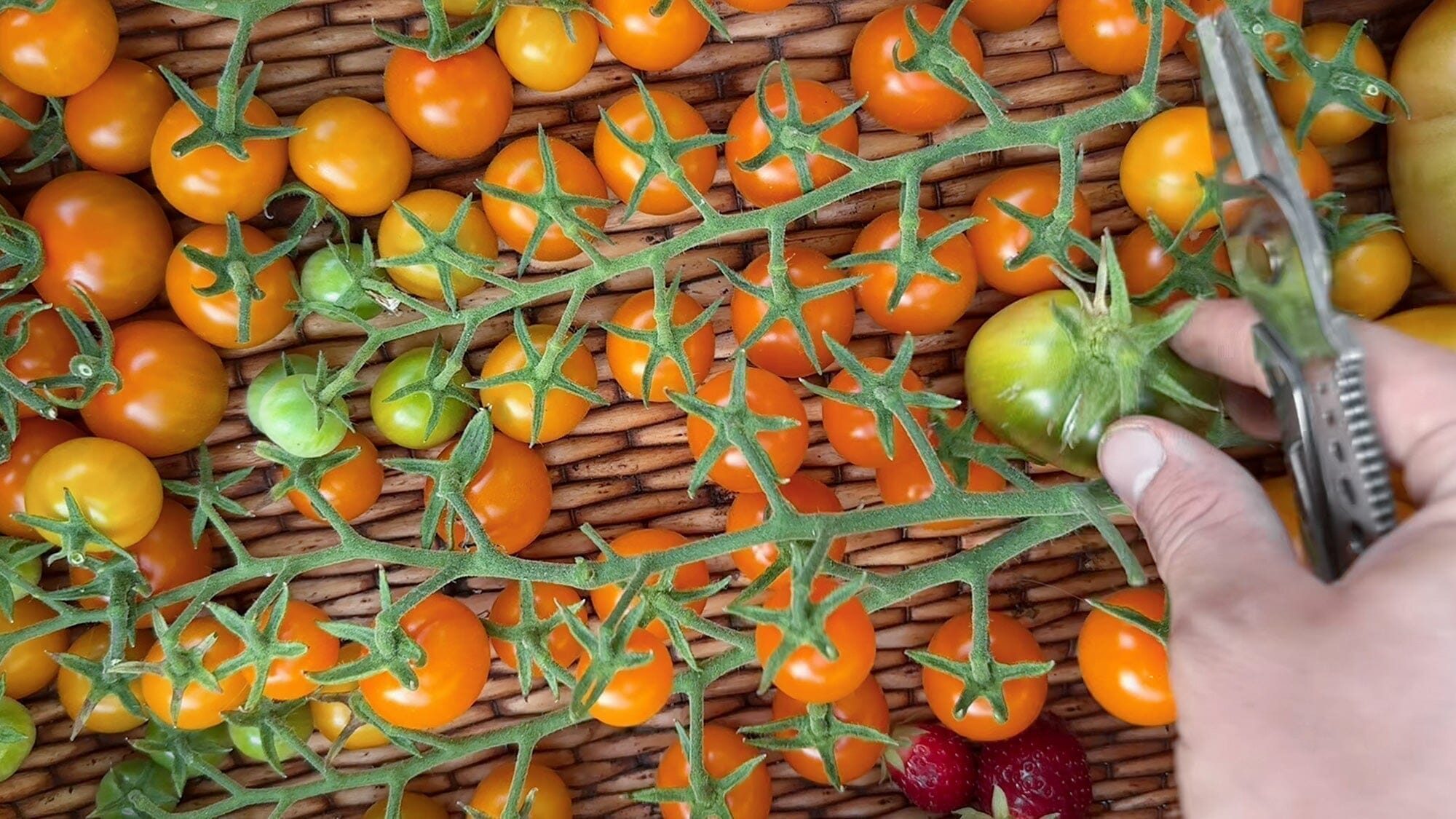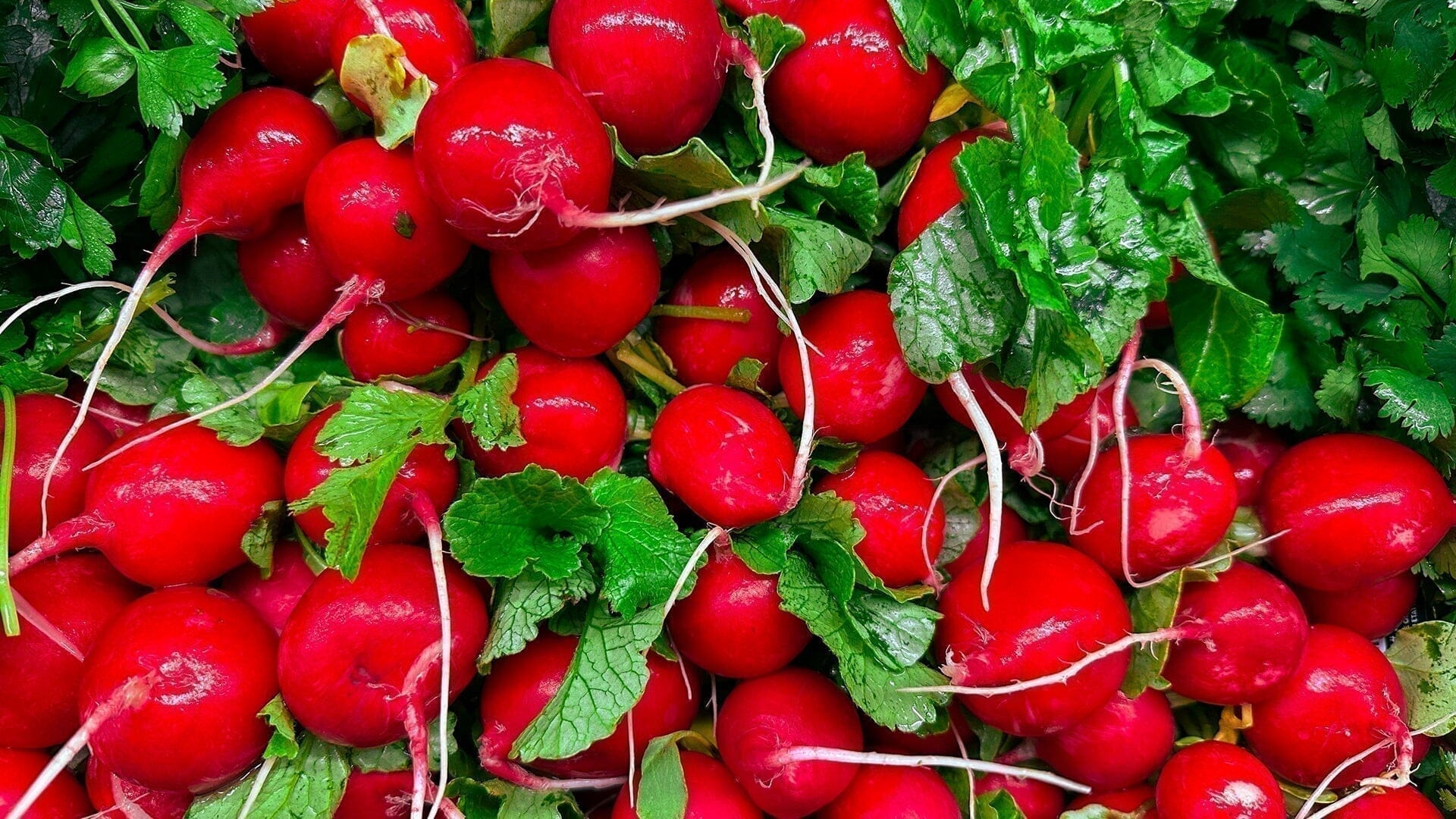Story by Reana Kim, Share a Seed
Photos by Hannah Packman, Reana Kim, Emilia Kawashima

· · ·
Dreaming of fields and pastures, but all you’ve got are pots and planters? You’re not alone. Many folks don’t have access to land (or at least suitable growing land) – but with the right pots and a little green thumb magic, you can absolutely still have the garden of your dreams! Whenever I lead Share a Seed events, the mutual-aid seed sharing project that I run in Washington DC, the first thing almost everyone tells me is that they don’t have the room to grow plants. Nonsense! Where there’s a will (and a pot or two), there’s a way. Container growing works indoors or outdoors and is an ideal option for land-lacking growers – whether you’re working with a single windowsill or an expansive patio space.
Tools You’ll Need: Hori Hori, Scoop, Cultivator
How Much Light Do Plants & Herbs Need?
Light is non-negotiable to grow plants, particularly food crops, since nearly all plants require light to photosynthesize. The nice thing about container gardening is that you can move your pots around seasonally (or even throughout the day!) to capture the right amount of light for their needs.
If you’re growing indoors, assess your light availability first, then choose your plants accordingly. Plants that fruit – think tomatoes, squash, cucumbers – need a lot of energy to grow and therefore require lots of direct sunlight. A space that receives at least six hours of direct sunlight daily should suit most fruiting plants. If your space gets less than six hours of direct sun, consider plants that can flourish with less, like leafy greens, peas and bush beans, or herbs.
How Are Plant Pots Measured?
Pots and other containers in the United States are typically measured one of two ways: in inches or in gallons. When a container has an inch measurement, it refers to the pot diameter across the top, normally measured in increments of 1-2 inches. Containers measured in gallons indicate the volume that the container can hold, increasing in increments of one gallon. A one-gallon container typically has a diameter of around 7-8 inches, but this varies depending on the style and shape.
An easy way to determine if a particular plant and pot is a match is to compare the measurements on the plant you’re purchasing with the container (for example, a 12” plant means that it needs a 12” diameter or 4-5 gallon pot). Use the guide below if you’re growing from seed or getting plants from sources that don’t provide planting recommendations.
What Is A Good Garden Container Size & Shape?
Garden container growing is not a one-size-fits-all affair – the garden containers you choose have to be right for your space and your plants. It’s easy enough to figure out what works well for us. Either we have room for a container, or we don’t! But it’s not always obvious which types of containers work for which plants, so let’s discuss some basic guidelines.
Plants grow in a variety of ways, both above ground and below. Some root horizontally and thrive in shallow but wide pots. Other plants have deep root systems and need abundant vertical soil space to thrive. Knowing how your plant grows is key to finding a container.
Generally, the minimum soil depth for vegetables is 12 inches, but as with most things in life, there are exceptions to this rule. Shallow or horizontally-rooted plants can grow well in a soil depth of as little as 4 inches – proof that you don’t need a lot of room to grow food! Plants that thrive in shallow containers (including rectangular window boxes) include radishes, lettuce varieties, cabbage and mustard greens, garlic, mint, thyme, and chives. If you can provide at least 8 inches of soil depth for your plants, you can branch out to leafy greens like kale and swiss chard and expand your container herb garden growing to include oregano and basil.
Plants will adapt to the spaces you give them, and with more space, you can expect larger growths and better fruit production. Many home garden crops – tomatoes, peppers, carrots, beans, and beets – can thrive in 12” pots. If you’re able to scale up your garden container, you’ll have happier plants and stronger production.
Container Garden Ideas & Tips
Sometimes you don’t have access to the right materials; luckily, plants aren’t particular about what their home looks like, just that it serves their needs! Container gardening already takes plants out of their natural environment, so you have room to be creative.
Let’s get real: Nice pots are really expensive! If you’re looking to save money, there are non-traditional containers that work perfectly well for growing. One of my favorite container hacks is growing in a 5-gallon bucket. A ceramic planter could cost up to $50 or more from the garden store, but 5-gallon buckets cost just a few dollars. These containers are fantastic for plants that need deep soil to grow to their maximum potential – like tomatoes! Since these buckets don’t come with drainage, you’ll want to drill several holes at the bottom so your plants don’t suffer from soggy roots. Another great cost-saving container is a fabric grow bag, permeable containers that promote air circulation and proper drainage. These bags come in all shapes and sizes and have the added benefit of being easy to fold up for storage or transportation.
Certain plants – like our 5-gallon bucket tomatoes, cucumbers, or any variety of squash – need extra support when growing. In the case of tomatoes, the fruits can get too heavy for the plant to support, causing the branches to snap or the plant to double over onto the ground. To keep our plant healthy and droop-free, we can use garden tape to anchor the main stalk to a bamboo stick or other type of stake. Tomatoes can also benefit from a helpful trick used for squash, cucumbers, and beans: trellising! String trellises are a great way to give vining and climbing plants the support they need without requiring a lot of bulky materials. Simply secure your strings to an area taller than the plant and anchor it to the container or into the ground. As the plant grows, the strings act as a net to keep it supported. You may need to help your plant out by using garden tape, or training it yourself by gently adjusting new shoots to grow in the way they’ll be most supported.
As an urban grower, I’m all about making the best use of the limited space I have. I love containers and raised beds as an option for folks who don’t have the luxury of land, and have wonderful harvests from my container plants every year. No matter the amount or type of space you have, with the right container and a little sunlight (or a grow light!), you can achieve all your garden dreams.
ABOUT
Reana is a DC-based policy and communications professional dedicated to making the food and farm system more equitable and sustainable. She has worked on food, agriculture, and social welfare issues for over ten years across three major US metro areas (Chicago, NYC, DC). Reana is master gardener who serves on the board for the Farmers Market Coalition and Slow Food DC and currently works in organic agriculture. She launched the Share a Seed project in the early days of the coronavirus pandemic to address the simultaneous loss of resources and rise in gardening interest. Reana loves connecting to fellow community members and showing that there is no one "type" of gardener, farmer, or outdoor enthusiast – getting your hands dirty is for everyone.
Follow along Share a Seed's Journey






